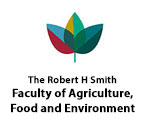Citation:
Abstract:
Assessing crops water use is essential for agricultural water management and planning, particularly in water-limited regions. Here, we present a biophysical model to estimate crop actual evapotranspiration and root-zone soil water content using proximal sensing and meteorological data (Crop RS-Met). The model, which is based on the dual FAO56 formulation, uses a water deficit factor calculated from rainfall and atmospheric demand information to constrain actual evapotranspiration and soil water content in crops growing under dry conditions. We tested the Crop RS-Met model in a dryland experimental field comprising a variety of wheat (Triticum aestivum L. and T. durum) cultivars with diverse phenology. Crop RS-Met was shown to accurately capture seasonal changes in wheat water use during the growing season. The average R2 of modeled vs. observed soil water content for all cultivars (N = 11) was 0.92 ± 0.02 with average relative RMSE and bias of 9.29 ± 1.30% and 0.13 ± 0.03%, respectively. We found that changing the integration time period of the water deficit factor in Crop RS-Met affects the accuracy of the model implying that this factor has a vital role in modeling crop water use under dry conditions. Currently, Crop RS-Met has a simple representation of surface runoff and does not take into consideration heterogeneity in the soil profile. Thus, efforts to combine numerical models that simulate soil water dynamics with a Crop RS-Met model driven by high-resolution remote sensing data may be needed for a spatially continuous assessment of crop water use in fields with more complex edaphic characteristics.

